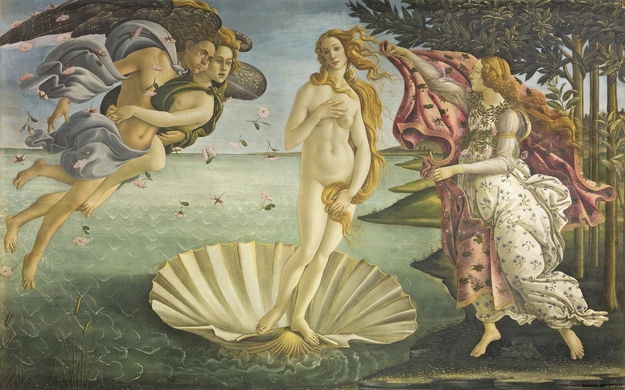Traditionally, aphrodisiacs have been the means to encourage heterosexual physical romance, often to counter erectile dysfunctions. Reflecting this wish, the primary ingredients of such aphrodisiacs are often animal penises. As Shamloul puts it, “Whether it was an Eastern civilization or a Western one, religious or atheist, man's aspiration for a better or best “manhood” has been a history‐time goal”. To this date, research on aphrodisiacs for women, not to mention non-binary individuals, is rare. The word aphros itself, “sea foam”, comes from a mythological story in which Aphrodite is born from Uranus’s castrated penis thrown into the sea. While the penis is considered the seed, the female counterpart, the sea, is conceived as merely a receptacle— the reproductive and creative potential of love is unequally credited among the genders. Moreover, we often observe that the obsession towards an unreachable ideal of hypermasculinity and hypersexuality expand beyond the private sphere under the bed sheets, to the public sphere of politics and society. From mythological and literary figures (witches) such as Circe, Calypso, Deianira, Medea, Ursula to historical figures such as Cleopatra, Yang Guifei, Jang Heejin, Queen Mary Tudor, aphrodisiac has been both a means for females to exert their power and make a political influence within their limited private sphere, but also by not challenging the patriarchal power hierarchy to its core, a tool which unfortunately reinforces the idea of love as aggression, exploitation and violence.
Moreover, we found that many ingredients considered to be aphrodisiac in Europe, originate from Asia and Africa, reflecting a colonial tendency and the trade history to view the exotic as erotic, in addition to an anti-ecological way of consumption. Many of these ingredients have permeated European cuisine to the extent that rejecting their usage entirely would not only be limiting, but also cannot present itself as more than a naïve denial of such history. Recontextualizing them in our using them is necessary. In our process of researching, creating and writing about the new love potion, we want to address and counter such hypermasculine aggression and pro-colonial sentiments in the history of aphrodisiacs. For us, aphrodisiacs are more than something which creates a physical effect on the body, they can also be about trust, the mind and how they all interconnect to create arousal. While the epistemic authority placed upon rational, scientific and objective approach led to a sole emphasis on the physiological aspects of aphrodisiacs and eventually led to discrediting aphrodisiacs altogether (as the effect of such ingredients is not scientifically supported), we weave psychological, cultural, literary, mythological, subjective elements together in developing a more holistic and pluralistic narrative that renders certain ingredients to be arousing.
We wish to use the aphrodisiac as a lens to speak about international conflicts, modern slavery and human trafficking, sexism, coronavirus and the rising death toll in a way that deconstructs hypermasculine aggression that we see as playing an active role in creating this violence today. At the same time, as the values of our society are slowly but surely changing, we would like to ask ourselves if love can be reimagined as being separated from violence, aggression, conflict and/or death, and can expand beyond the realm of heterosexual physical romance, for to reconceptualize what an aphrodisiac is, is to reconceptualize what love is.
We cordially invite you to embark on our odyssey— where crew members across species partake in transforming adventures of various amorphous forms.
Discover and relish our recipes:
References
Shamloul, Rany. “Natural Aphrodisiacs”. The Journal of Sexual Medicine 7, no.1, (2010): 39-49. doi:10.1111/j.1743-6109.2009.01521.x
